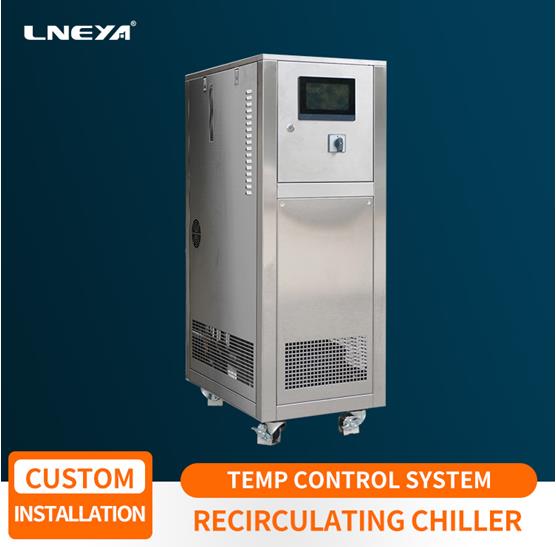À quoi dois-je faire attention lorsque j'ajoute du réfrigérant à un refroidisseur à eau ?
In our life, we believe that everyone is
very familiar with refrigeration. In the central air conditioning and
industrial production process cooling industry, small water-cooled chillers is
more common. This unit is composed of a compressor in the fuselage, a
horizontal shell and tube condenser, an evaporator, a thermal expansion valve,
and some related parts. Under the cooperation of these auxiliary parts, the
overall small water cooled chiller is compact in structure, convenient in
operation and control, and is popular among the public in the market.

For refrigeration systems that do not have
a high pressure reservoir and a low pressure vapor-liquid separator, the
control of refrigerant charge is particularly important. Because the
refrigeration system is a condenser and also acts as a high-pressure reservoir,
the refrigerant is stored in the condenser, and the condenser is cooled. The
heat dissipation area is reduced and the condensing pressure is increased,
resulting in a decrease in cooling capacity.
For the control of the refrigerant charge
of such small water-cooled chillers, the following methods are followed during
the filling process:
First, touch the temperature of the
condenser casing.
The upper outlet of the condenser outlet is
heated above the outlet, and the outlet below the outlet is cool. (There is a
description of the high temperature exhaust of the compressor in the inside.
The cooling indicates that the small water-cooled chillers is a liquid space.)
Second, look at the inspiratory pressure.
Corresponding to the temperature of the
refrigerant water in the evaporator. (That is, corresponding to the evaporation
temperature.)
Third, look at the compressor return pipe
temperature.
The high-temperature unit return pipe
should be cooled and dew, but it can be dew condensation to the compressor
return valve; the low-temperature unit return pipe should be frosted, but the
frost can be connected to the compressor return valve. If condensation or frost
builds up on the compressor casing, liquid refrigerant will enter the
crankcase, causing the compressor to run back and cause liquid
problem.
The above is a partial analysis of our
LNEYA technicians for water-cooled chillers. Regarding the specific use of our
water-cooled chillers, you can contact us sales@lneya.com for more detailed
instructions.
Recommandations connexes
-
Cooling and heating of the reactor and the principle of use
1224Cooling and heating circulator thermostats are commonly used with glass reactors for biochemical instruments. They are widely used in modern fine chemicals, biopharmaceuticals, scientific research and experiment industries. They can be concentrate...
Voir les détails -
Precautions for the use of cooling and heating circulation device for lithium battery testing
1013As a professional experimental test auxiliary instrument, the cooling and heating circulation device for lithium battery testing is the circulating supply end of the cold source and the heat source, with a wide operating range. It is used in pharm...
Voir les détails -
Comment gérer l'alarme de défaillance de l'équipement du refroidisseur à recirculation ?
933Que faire en cas de panne et d'alarme pendant l'utilisation de l'équipement de refroidissement à recirculation ? Afin d'assurer la production, ces problèmes doivent être résolus rapidement. Nous devons d'abord comprendre les causes des pannes et des alarmes, et adopter dif...
Voir les détails -
Why does a chiller need to be installed for cooling the water storage tank?
1020The main reasons for configuring a chiller for cooling the water storage tank are related to the following aspects: Temperature Control: In many industrial and commercial applications, such as air conditioning systems, chemical processes, ...
Voir les détails
 LNEYA Industrial Chillers Fabricant Fournisseur
LNEYA Industrial Chillers Fabricant Fournisseur













